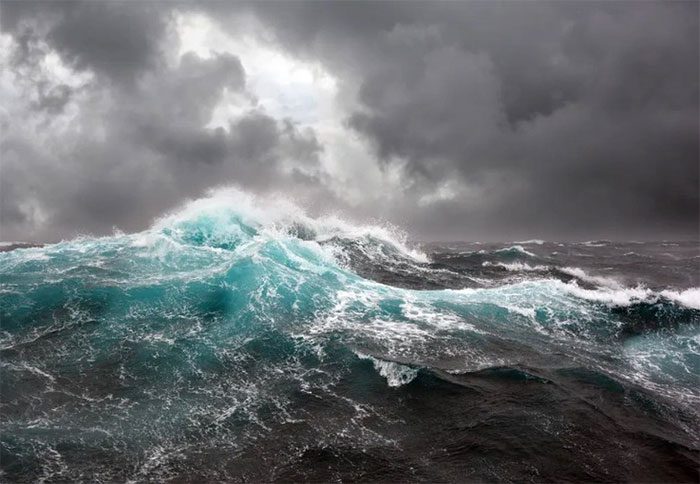Seismic data indicates that ocean waves have become increasingly intense in recent decades, leading to more storms and higher sea levels in various maritime regions.
As ocean waves rise and fall, they exert pressure on the seabed, generating seismic waves. Currently, these seismic waves are strong and widespread, appearing as regular beats on seismographs.
Professor Richard Aster, head of the Department of Geophysics at Colorado State University (USA), and his colleagues have been monitoring the increase in ocean wave activity worldwide over the past four decades.

As the planet warms, these waves capture destructive energy impacting coastal areas – (Photo: METEORED).
With global data, regional seismic studies, satellite observations, and oceanic research, the team found that over the last decade, the energy of ocean waves has significantly increased, coinciding with a rise in storm activity.
The researchers analyzed wave intensity from the late 1980s to the present at 52 seismographic stations worldwide.
They observed that at 41 of these stations (79%), the energy of ocean waves has steadily increased over the decades.
As a result, since the late 20th century, the average global energy of ocean waves has risen at an average rate of 0.27% per year. However, since 2000, this rate has increased to 0.35% annually.
The most significant energy increases were noted in storm-prone areas of the Southern Ocean, near the Antarctic Peninsula. Nevertheless, the findings also indicate that the North Atlantic waves have increased the fastest in the past few decades. This aligns with recent studies showing an increase in the intensity of North Atlantic storms and coastal hazards.
Storm Ciarán’s assault on Europe in November 2023, characterized by strong waves and hurricane-like winds, serves as a prime example.
Oceans absorb about 90% of the excess heat generated by the rising greenhouse gas emissions from human activities in recent decades.
This excess energy can translate into more destructive waves and stronger storms.
The research was published in the journal Nature Communications.
Coastal Warning
The findings from the research team serve as a warning for coastal communities, where increasing wave activity is causing infrastructure damage and land erosion.
The impact of rising wave energy becomes even more complex in the context of sea level rise due to climate change and land subsidence.
Researchers emphasize the importance of mitigating climate change. Furthermore, there is an urgent need to enhance the resilience of coastal infrastructure and develop effective environmental protection strategies.


















































